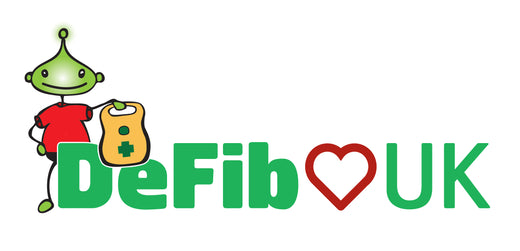When someone experiences a sudden cardiac arrest, time is everything. Each minute without defibrillation reduces the chance of survival by up to 10%. Having an Automated External Defibrillator (AED) nearby is a fantastic step towards being prepared—but having just the AED itself isn’t quite enough.
One simple but often overlooked addition to your setup can make all the difference: a second set of defibrillator pads (also known as electrodes).
Here’s why having that spare set of defib pads is not just a nice-to-have—it’s essential.
1. Pads Are Single Use Only
Once a set of AED pads is used, they can’t be reused. The adhesive loses its stickiness, and the gel that helps conduct the shock safely deteriorates. Whether the person survives or not, those pads are done.
If your AED has just been used, and you don’t have a spare set, your device is temporarily out of action. That could be a big problem if another emergency arises before you’ve had a chance to restock.
2. Mistakes and Misfires Happen
Even with the best training, things can go wrong. Pads might be applied incorrectly, or become contaminated by sweat, water, or body hair. If a mistake means the first set is no longer usable, having a backup means you can act immediately instead of standing helpless.
In a high-stress situation, the last thing anyone needs is to be without the equipment they need because there was only one set of electrodes.
3. Multiple Casualties Are Rare—But Possible
While most defibrillator uses involve just one person, there’s always the chance that more than one casualty needs help—think of a lightning strike, large-scale accident, or high-risk workplaces.
Even if it's rare, being prepared for more than one cardiac arrest is part of being truly emergency-ready. A second set of AED pads means you’re not gambling on luck.
4. Delays Can Cost Lives
If your only set of pads has been used or damaged and you need to wait for replacements, your AED is essentially offline. Reordering might take days, depending on your supplier.
A second set of defib pads stored with the device means zero downtime. It’s a small investment for 24/7 peace of mind.
5. Best Practice and Compliance
For businesses, schools, sports clubs and public venues, maintaining your AED with a backup set of pads is not just good practice—it may be required under internal policies or risk assessments.
Keeping your defib fully stocked and ready to go reflects a serious commitment to health and safety. It also shows you’re thinking ahead, which matters to insurers, auditors, and the public.
What Type of Pads Should You Keep as a Spare?
Match the spare set to your device—brand and model. If your AED Some pads have shorter shelf lives than others, so keep an eye on expiry dates and make sure the spares are stored with the AED in the carry case or cabinet.
If you’re not sure which pads are right for your defib, just ask us at DeFib UK. We’re here to help you stay prepared.
Final Thought
A defibrillator without a working set of pads is like a fire extinguisher without foam. It might look the part, but it won’t do the job. Adding a spare set of AED pads is one of the simplest and smartest ways to increase your readiness and resilience.
Don’t wait for a second emergency to realise you needed a second set. Defib UK, where Saving Lives is Not an Alien Concept.
If you’d like help checking your current AED setup, or you want to order spare defib pads for your device, get in touch with our team at DeFib UK, 01473 551815. We’ll make sure you’ve got exactly what you need—when you need it most.

